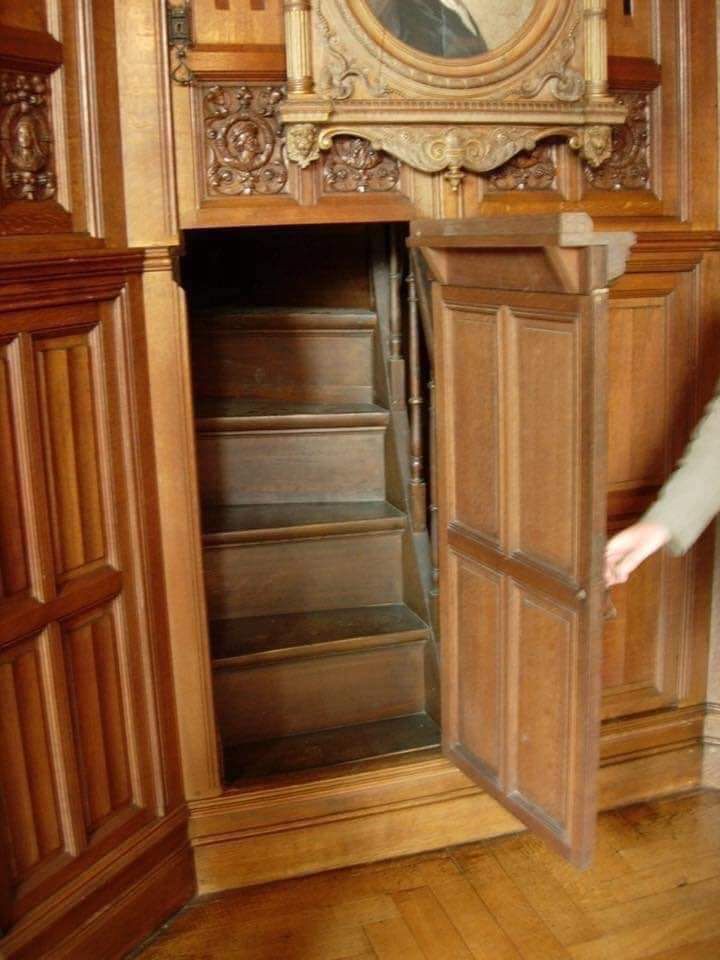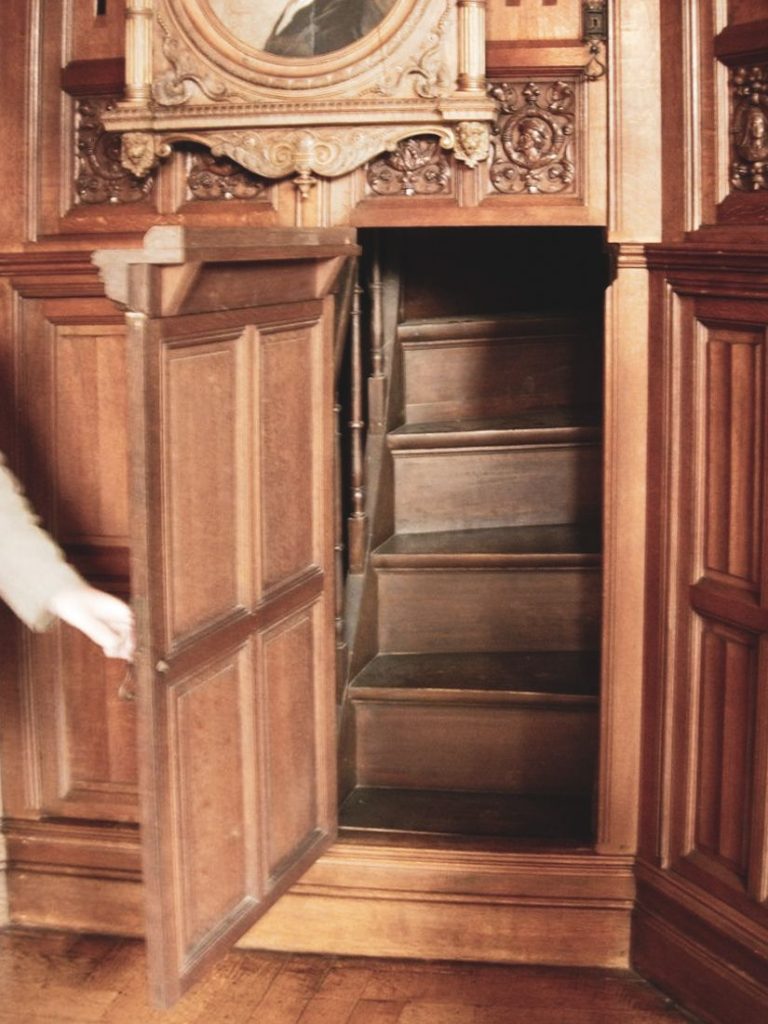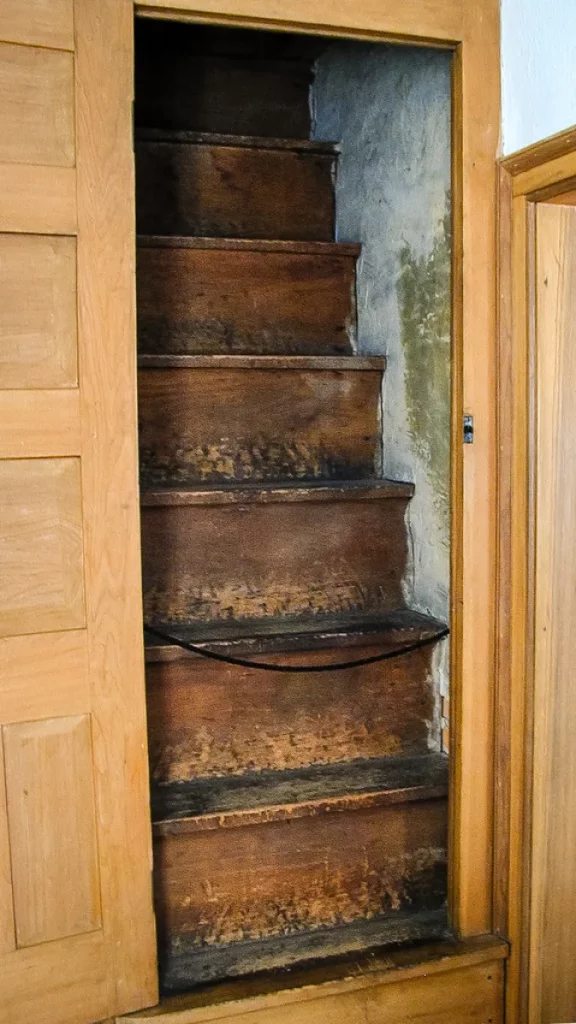Hidden staircase in a 19th century Victorian home leading to a secret room.

The charm of 19th-century Victorian homes extends beyond their ornate exteriors and grandiose facades. Within the intricate tapestry of these architectural marvels lies a captivating secret—hidden staircases leading to clandestine chambers. This article embarks on an informative journey, shedding light on the historical context, architectural nuances, and the multifaceted functions of these concealed passages.
Victorian architecture, flourishing during the 1800s, embodied an era of elegance and excess. The societal norms of the time prompted architects to design homes that reflected both public grandeur and private sanctuaries. The hidden staircase emerged as a discreet yet stylish solution to this dichotomy.

Beyond their aesthetic appeal, hidden staircases served practical purposes. Tactfully integrated into the architecture, these staircases facilitated seamless movement throughout the home. Whether providing servants with inconspicuous access or allowing homeowners to navigate their expansive residences discreetly, these architectural marvels embodied the essence of Victorian pragmatism.
The construction of hidden staircases required a fusion of creativity and engineering. Craftsmen employed ingenious mechanisms, including pivoting bookcases, concealed panels, and rotating doors, to seamlessly integrate these features into the overall design. The meticulous craftsmanship showcased the ingenuity of Victorian architects and builders.
The secret rooms accessed through these hidden staircases added an element of mystery to Victorian homes. While some served utilitarian purposes such as private studies or retreats, others harbored clandestine activities. The diversity of functions, from exclusive gatherings to the safekeeping of valuables, mirrored the multifaceted lives of Victorian homeowners.

T The allure of secrecy embedded in these hidden spaces extended beyond the physical. It became a psychological retreat—a manifestation of the desire for privacy in an era defined by societal constraints. The hidden staircase became a metaphorical bridge between the public persona and the private world, inviting occupants to explore realms both practical and fantastical.
In exploring the hidden staircases of 19th-century Victorian homes, we unravel not only the physical intricacies of architecture but also the social dynamics and cultural nuances of a bygone era. Each concealed passage tells a story of creativity, functionality, and the timeless human desire for privacy and mystery. As we navigate through the secrets of these hidden spaces, we embark on a historical journey that transcends the physical confines of Victorian homes and invites us to ponder the fascinating lives lived behind closed doors.